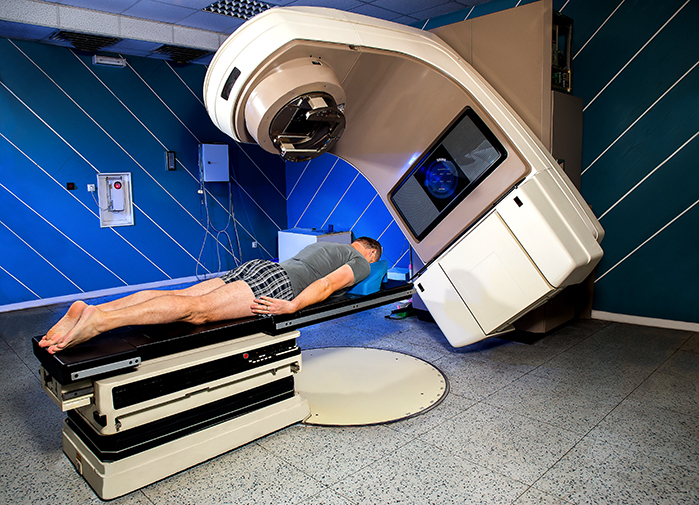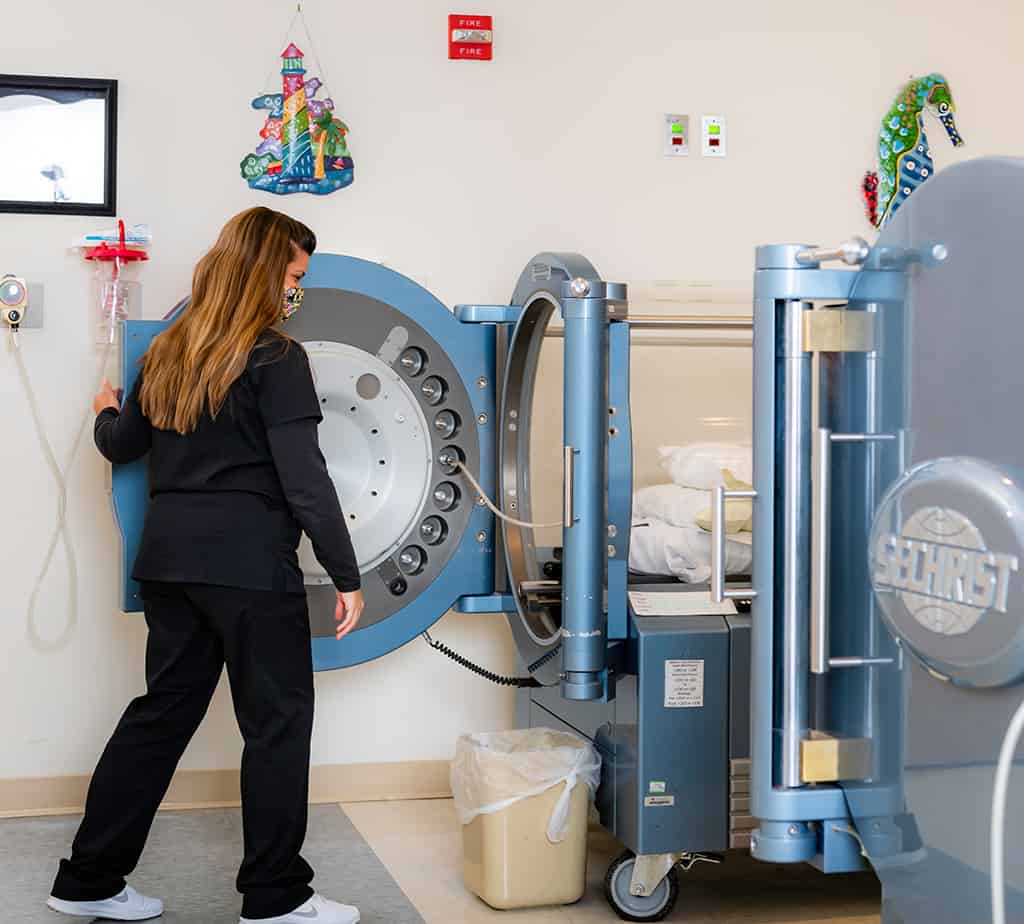Radiation Injury
Hyperbaric Oxygen Therapy (HBOT) for Radiation Injury in Fayetteville, NC

Radiation Injury
Radiation side effects are generally divided into two categories. First, there are those that happen during or just after the treatment, called acute reactions. Second, there are those that happen months or even years after the treatment, called chronic complications. The acute side effects almost always resolve with time and are treated in such a way as to address the patient’s symptoms. Unfortunately, chronic complications often may not get better with time and are likely to get worse. Almost all chronic radiation complications result from scarring and narrowing of the blood vessels within the area which has received the treatment.
Chronic radiation damage is called “osteoradionecrosis” when the bone is damaged and “soft tissue radionecrosis” if it is muscle, skin or internal organs which have been damaged by radiation. The high dose oxygen provided in the hyperbaric chamber is carried in the patient’s circulation to the site of injury to be available for repair of the damage done by the narrowing and scarring of the blood vessels.
Research & Studies
- Long-term Incidence of Hematuria, Urethral Stricture & Bladder Cancer after Radiation Therapy for Prostate Cancer
- Hyperbaric oxygen treatment of chronic refractory radiation proctitis: a randomized and controlled double-blind crossover trial with long-term follow-up.
- Hyperbaric oxygen therapy and delayed radiation injuries (soft tissue and bony necrosis): 2012 update.
- Hyperbaric oxygen therapy for hemorrhagic radiation cystitis.
- Adjuvant hyperbaric oxygen therapy (HBO2)for treatment of necrotizing fasciitis reduces mortality and amputation rate.


HBOT helps white blood cells kill bacteria, and help osteoclast clean up the dead and infected bone. Once the infection is under control and all the dead bone is gone, new bone is laid down by osteoclasts. These processes require high levels of oxygen to function optimally. HBOT also helps antibiotics work better, and in conjunction with some antibiotics, helps eradicate the biofilms that form in many of these cases.

INCREASES WHITE BLOOD
CELL EFFECTIVENESS

IMPROVES QUALITY
OF LIFE IN PATIENTS

STIMULATES RELEASE
OF STEM CELLS

MOST CONDITIONS
COVERED BY INSURANCE
COMMONLY, THESE PATIENTS WILL RECEIVE 40-60 TREATMENTS TO CLEAR THE INFECTION.
Does a Hyperbaric Treatment Take?
Hyperbaric Oxygen Therapy (HBOT) is a non-invasive medical treatment administered by delivering 100% oxygen at pressures greater than two to three times the normal atmospheric (sea level) pressure to a patient in a chamber. Most HBOT treatments generally take about 2 hours. Treatments for some indications can last up to 4 hours. Serious diving injuries can require a treatment for longer than 5 hours. The hyperbaric physician will determine how long each patient’s HBOT treatment will last.

